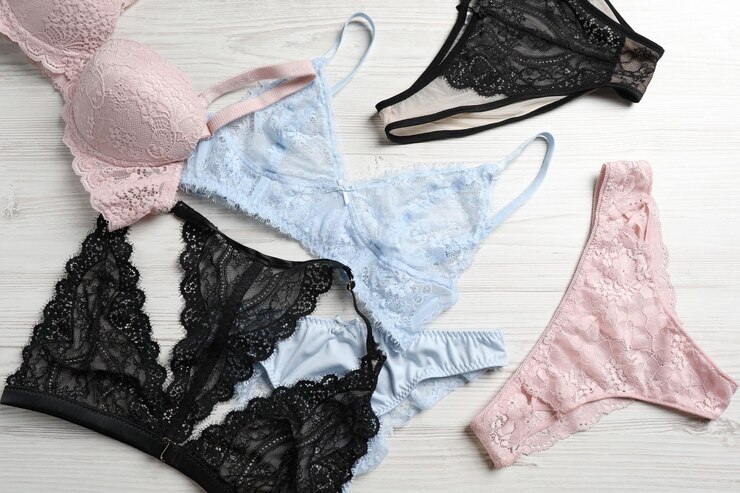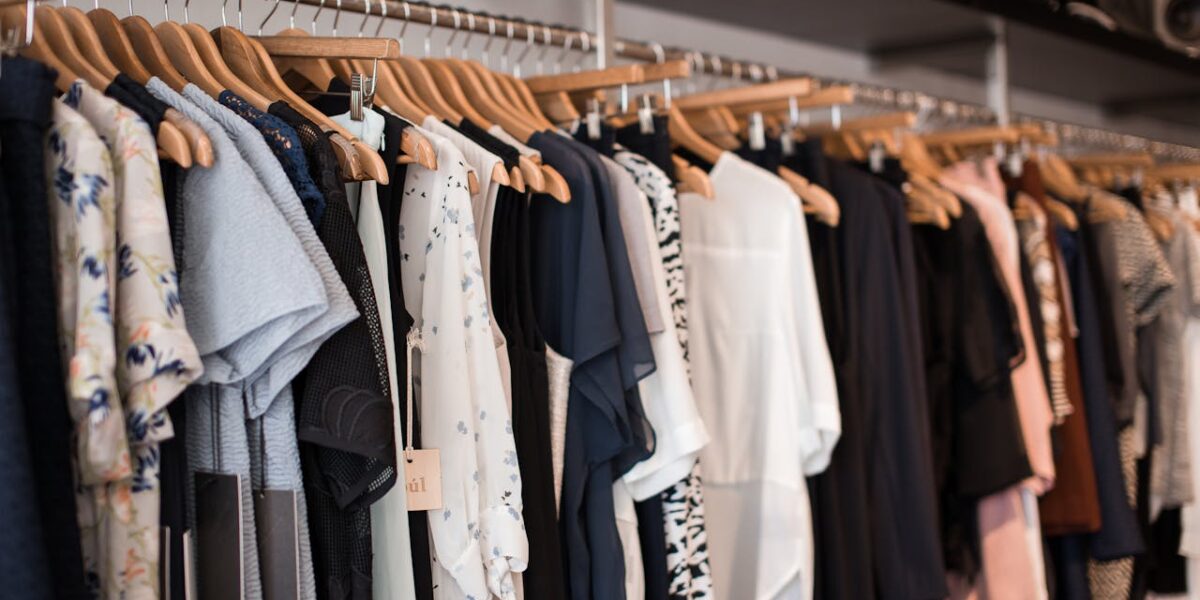Buttons are a crucial component that is used to create higher-quality clothing. No matter what you’re wearing, buttons are a constant. They allow the garment to enter the world of finesse, and they perform a crucial function within it.
Different types of button have countless applications outside of the apparel industry.
Today’s buttons are mostly made of plastic, although in the past, they were often crafted from metal, wood, or seashell. They serve the function of securing two pieces of fabric together.
Although all kinds of buttons are most commonly seen on garments, they can also be found on other types of containers like purses and briefcases.
The material composition of buttons has changed over the course of history, reflecting the progression of materials science and technology. Buttons have been made from nearly every conceivable material, both natural and synthetic, including mixtures of the two.
They may also be mass-produced in high-tech factories, or they may be the result of a low-tech cottage industry. Artist-made buttons are highly sought after by collectors and are often referred to as “studio buttons.”
Today, buttons are typically made from materials such as hard plastic, seashell, metal, and wood, while other materials are reserved for high-end or vintage pieces or found only in collections.
When Were Buttons Invented
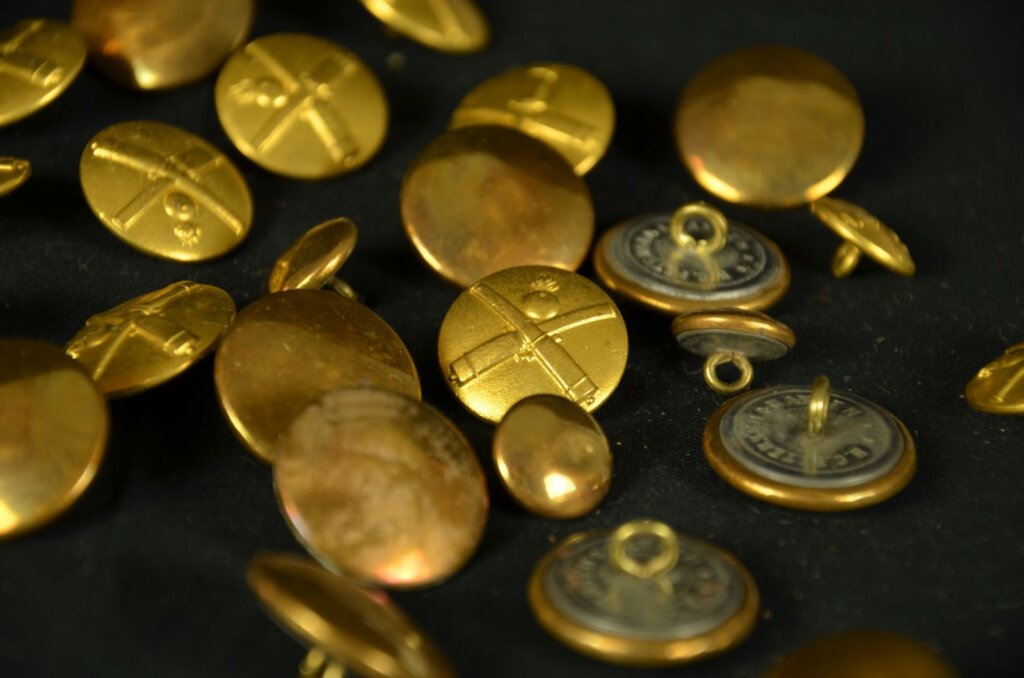
Ornamental buttons fashioned from bone, horn, bronze, and wood date back to prehistoric times. Button clasps made of bronze were first used in this era. Buttons were mostly utilized as decorations before the beginning of the Renaissance period.
However, with the development of the buttonhole in the Renaissance period, buttons gained practical use, leading historians to designate the years 1830–1850 as the “golden age” of buttons. Buttons were employed by the ancient Romans to secure garments, but many of them were made of precious metal and expensive fabric, making them unattainable for anyone except the very wealthy.
Because of the Industrial Revolution, even the poor could afford to own buttons. Flat, four-holed buttons were developed, and brass buttons gained popularity.
Queen Victoria, memorializing Prince Albert, became a fashion icon by wearing a string of mourning black glass buttons in the late 19th century.
Fashionable buttons from the 20th century served dual purposes as both ornament and attachment. Not even the development of the zipper could deter them.
Even though its primary purpose is practical, its aesthetic qualities have led to its widespread adoption. The button style, button placement, and fabric content all play a role in determining the best option for fastening a garment.
Even something as seemingly little as a button can hold great significance in the field of archaeology.
Buttons on clothing can be examples of folk art, studio craft, or even little works of art when it comes to applied arts and crafts.
A Reference To Button Sizes
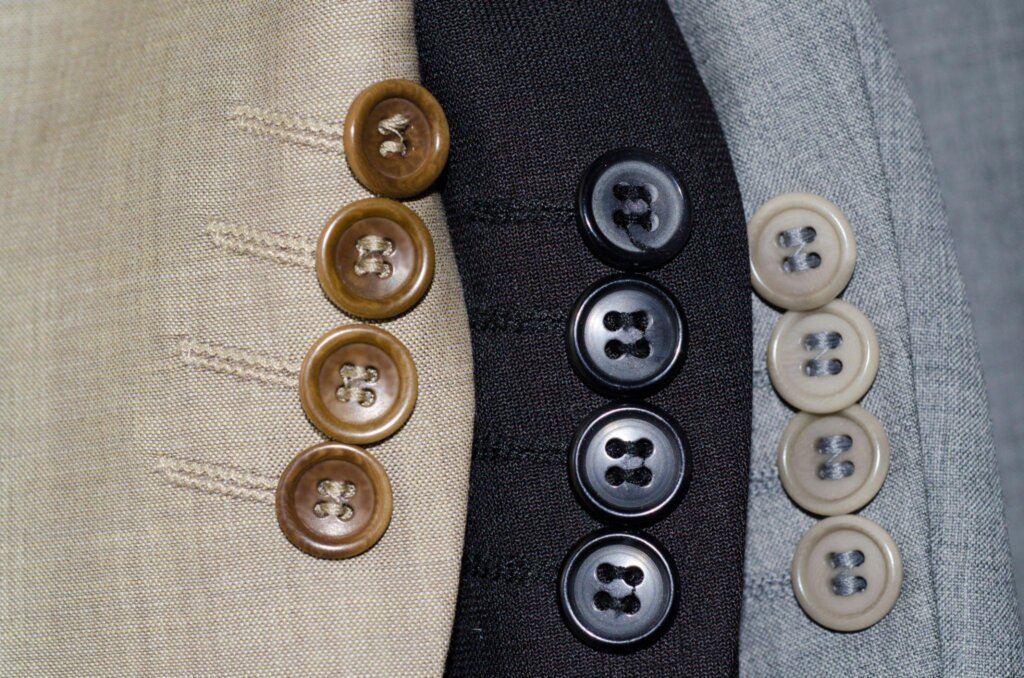
Depending on its function, the size of the button will vary.
Types of shirt buttons are typically smaller and closer together than those types of jacket buttons, which are typically larger and wider apart.
The standard unit of measurement for buttons is the line, with 40 lines equaling 1 inch.
Sixteen lines (10.16 mm, men’s shirt standard) and 32 lines (32.40 mm) are two common button sizes (20.32 mm, typical button-on-suit jackets).
Attachment Methods For Buttons
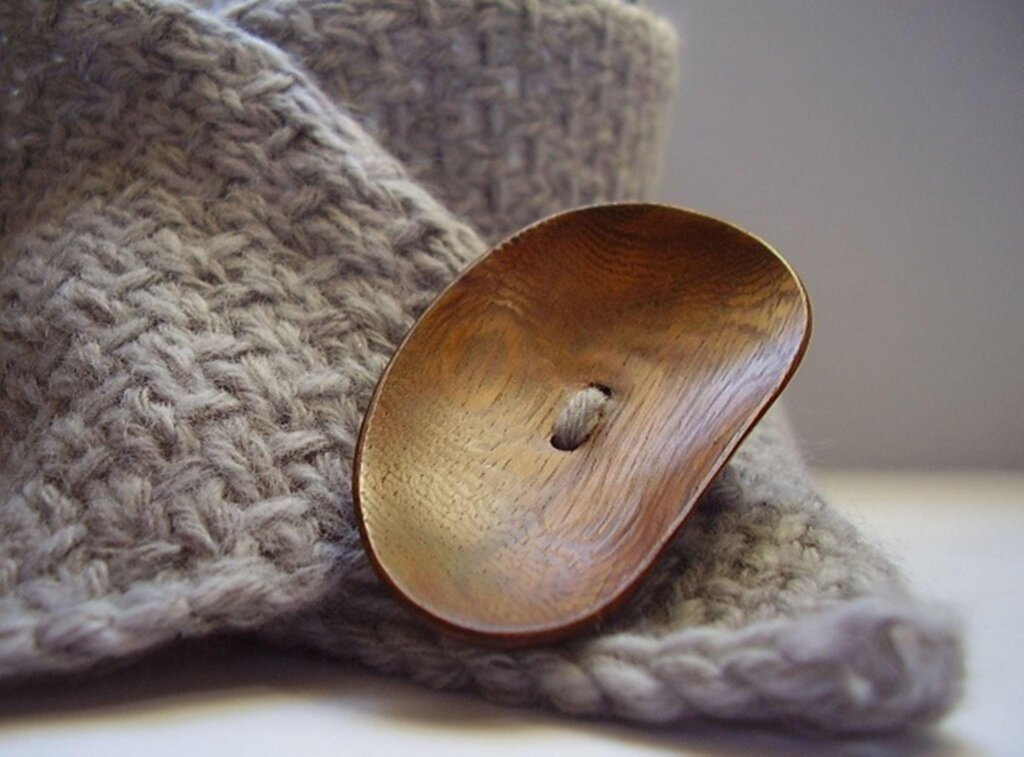
On the left are three sew-through buttons made of plastic and one shank button covered with fabric (right)
Shank buttons have an empty bulge on the back that the thread is sewn through to attach the button.
Button shanks can be made from a separate piece of the same or a different material than the button itself and added to the back of the button. They can also be carved or molded directly onto the back of the button, which is called a “self-shank” by collectors.
Buttons that are flat or sew-through have holes that thread is sewn through to attach the button.
You can sew flat buttons on with a sewing machine instead of by hand, and you can use them on heavy fabrics by working a thread shank to make the button stick up higher above the fabric.
Criteria For Making A Button Choice
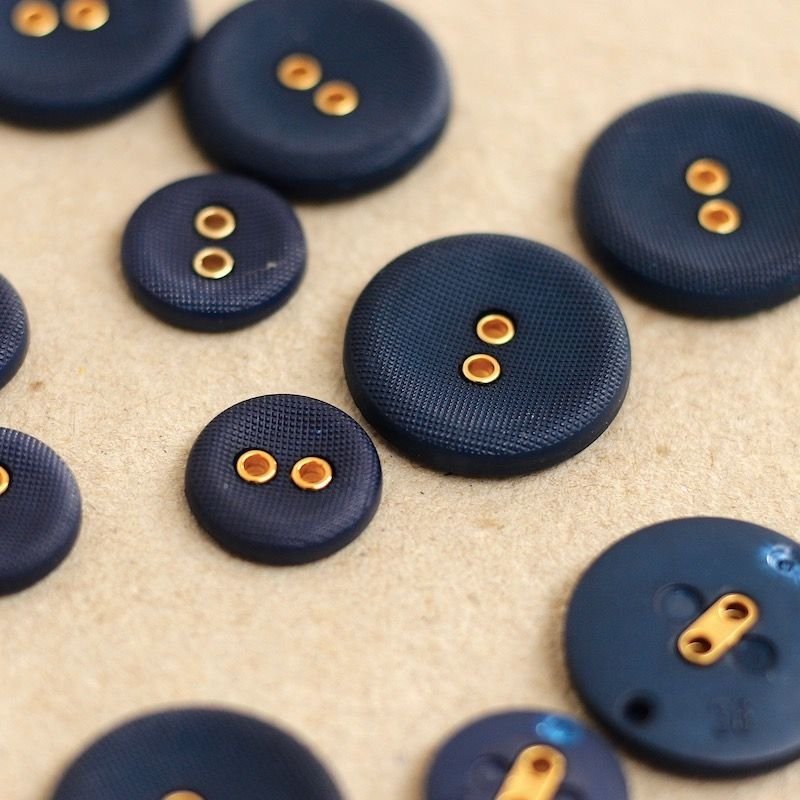
- It’s important to test the button’s quality. The ability to withstand several washes and maintain its vibrant colors is essential. It’s also important to test the button’s firmness.
- Pick a button that works with the flap on the garment.
- The Shank type of buttons are ideal for closing the waistband of your favorite pair of denim shorts or pants.
- The use of color is significant. It’s up to the designer and the fabric used to decide whether they want to blend or contrast the colors.
- You should be able to wash it without any problems. Even if the wooden or cloth buttons are attractive, their appearance will fade after a few washes.
- If it is metal, it shouldn’t rust.
- It must be comfortable to use and simple to handle.
- The amount of force required to snap and unsnap it, if it is a snap button, should be minimal.
Types Of Buttons And Their Uses
Different kinds of buttons come in various forms depending on their constituent materials. However, the different types of button are as follows:
- Plastic Button
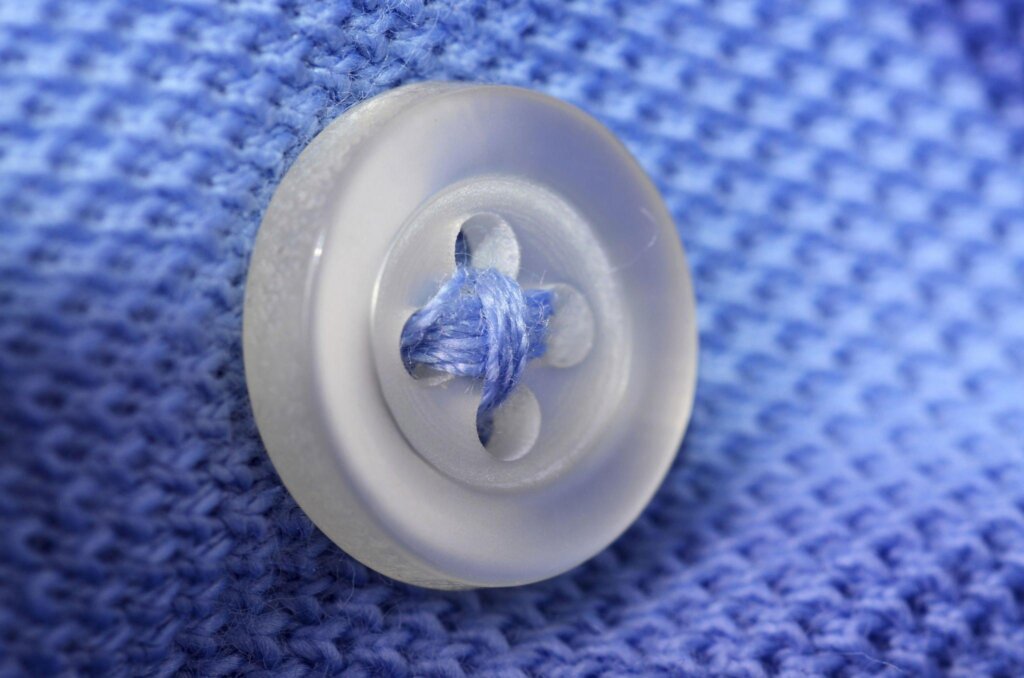
These types of buttons for clothes that people use the most. A flat button made of Polyamide, ABS, acrylic (PMMA), nylon, resin (polyester), urea, etc., is a plastic button. These are cheap and not very shiny. Resin buttons are made more than any other kind of plastic button. A lot of tops and shirts have these. In Blazers and Coats, buttons made of plastic come in bigger sizes.
There were a lot of different colors and patterns of plastic buttons. These are very good at resisting heat, rust, and wear. These are used a lot in the clothing industry because machines can make a lot of them at once.
There can be two or four holes in a plastic button. But for children’s clothes, you should use buttons with four holes. For children’s textiles and clothing, it’s best to use tonal-colored threads for the lockstitch so that you can see if it’s done right. For better performance, you should use at least eight stitches of spun polyester thread per buttonhole.
- Metal Button
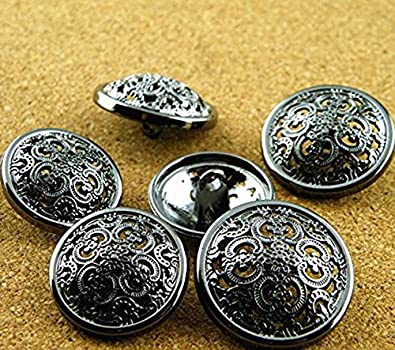
These clothes button types are another well-known button. Copper, Aluminum, Zinc Alloy, Iron, and Stainless Steel can all be used to make metal buttons. These can be big or small, round or oval, light or dark, and made of different materials.
Most of the time, these are used in denim, jeans, pants, etc. They can also have two or four holes. Metal shanks are used in denim button shanks. Leather clothes can also have buttons made of metal. Even though plastic snaps are available now, metal snaps are still very popular.
- Fabric Button
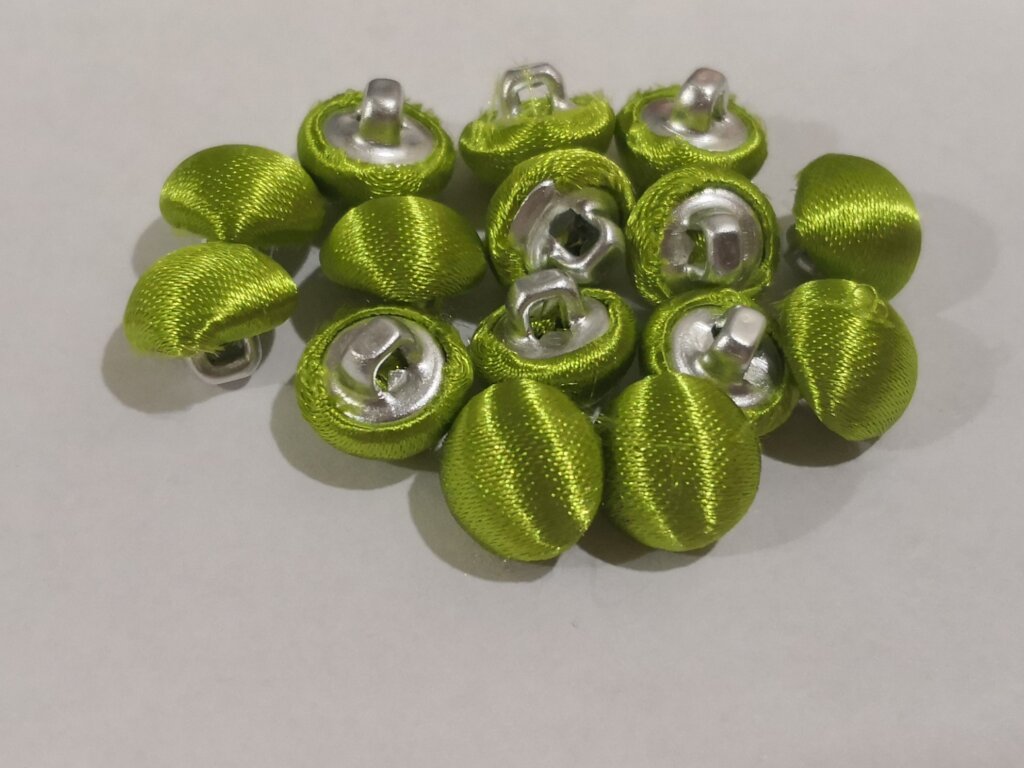
A fabric button is made from fabric or plastic buttons that are only covered with fabric or yarn. It comes in handy when you want a dress with buttons and fabric that are the same color.
If you want to make a fabric button, you should think about how well the fabric will hold up in the wash. The most common kind of fabric button is made from a single piece of fabric and has a flat back. These types of sewing buttons are often used on clothes and other items because they don’t stick out and lie flat against the fabric.
Different types of buttons made of fabric can have stripes, solid colors, or printed designs like stars, flowers, letters, or logos. Most of the time, these buttons are on dressy clothes for women.
- Shell Button
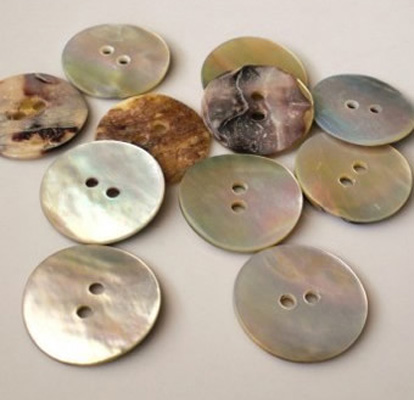
Mollusk shells, like those of oysters and clams, are used to make shell buttons. They come in many different colors, sizes, and shapes, and people like them because they look different. Compared to other buttons, these ones are pretty heavy. There can be two or four holes in these.
These can also be square, heart-shaped, round, oval, star-shaped, fish-shaped, flower-shaped, and round. Now, you can also get designs with flowers. You can put these on a shirt, a vest, or a sweater.
- Glass Button
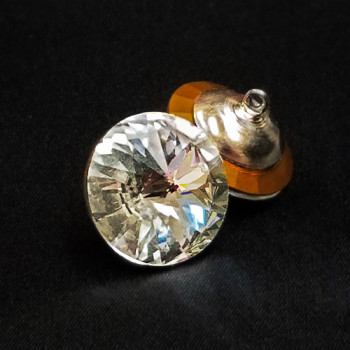
There are a lot of different shapes, sizes, and colors of glass buttons. These buttons can add something extra to your clothes because they are stylish, elegant, and stand out. You don’t have to worry about safety because the glass used in buttons is strong and won’t scratch.
- Pearl Button
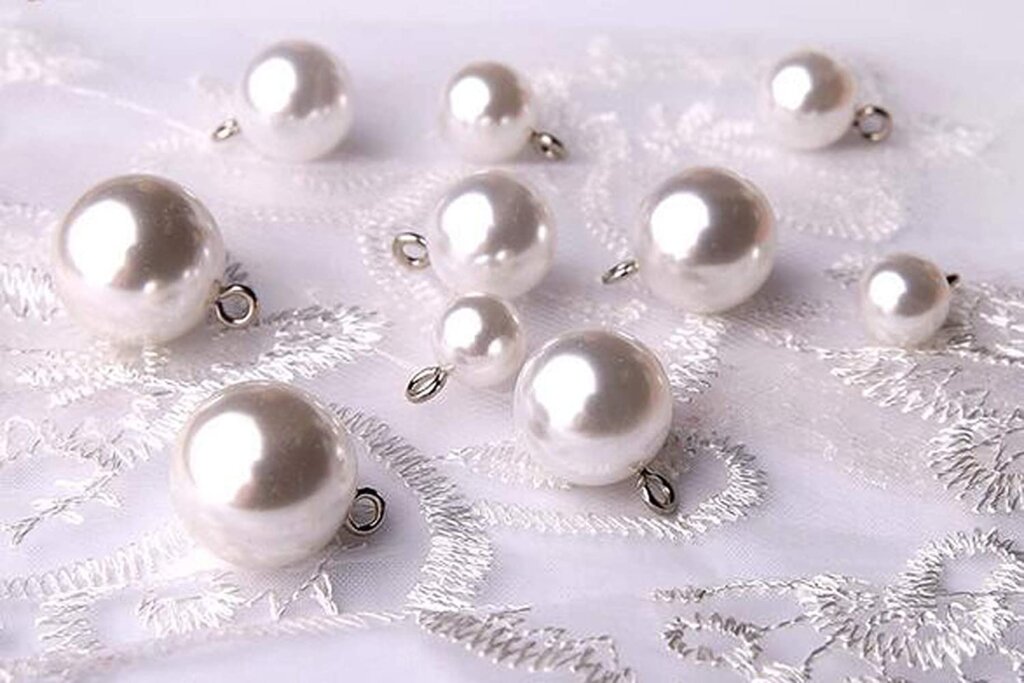
You might not realize how strong pearl buttons are. These come in a lot of different colors and sizes, and they make your clothes look very expensive. The pearls from the mother of the pearl are used to make these. These buttons can be useful and pretty at the same time. These can be used to make sweaters, knitwear, hats, shoes, bags, and a lot of other kinds of clothes. You can sew pearl buttons by hand or with a machine.
- Decorative Button
Any material that looks like a picture can be used to make a decorative button. Adding decorative buttons to your clothes is a great way to make them more unique. They can be used to draw attention to a certain feature or just to add some fun and style.
You can get buttons with your own design on them. You can make these out of wood, ceramic, metal, glass, clay, and many other things. There are a lot of different colors, sizes, shapes, designs, and purposes for these. You can put these on coats, pants, sweaters, jackets, and a lot of other things to make them look nice.
- Ceramic Button

Clay is used to make clay buttons. Most of these are made by hand. There are many different shapes, colors, and designs to choose from. These can be round, in the shape of a star, a leaf, a heart, a square, a hexagon, or even a fish. Floral designs are also available. These are used to make dresses that are light and fancy.
- Flat Button
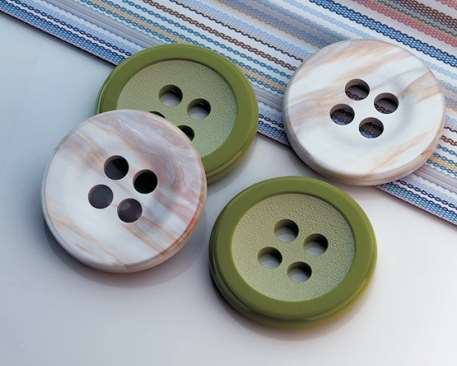
Flat button buttons are sewn onto clothes to make them look nice and to make them work. Buttons can be made out of many different things, like metal, plastic, wood, or even bone.
- Hook & Eye Button
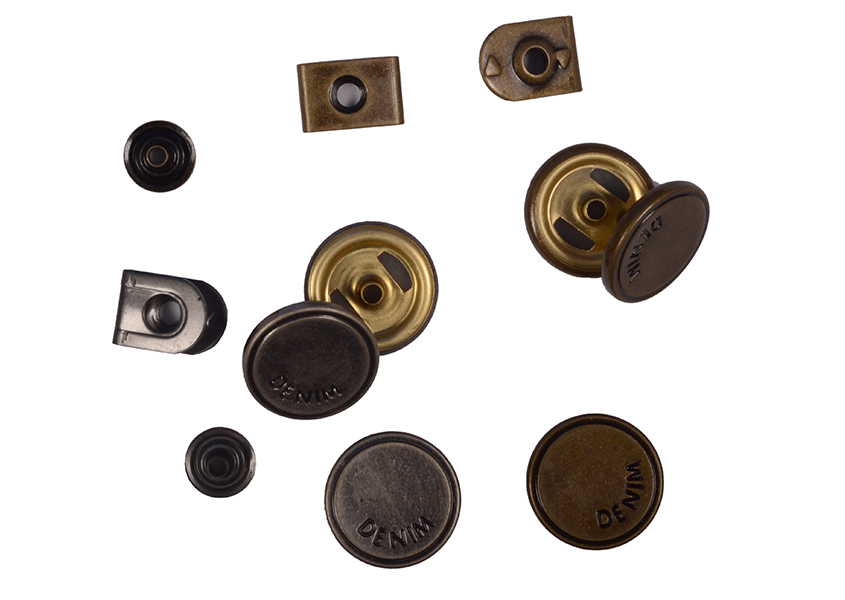
A hook-and-eye button is a type of fastener that is used to close clothes. On one side, it has a small hook, and on the other, a loop. Hook-and-eye buttons are used to connect two pieces of fabric. It usually works for things like dresses, skirts, bras, and belts.
- Lapel Button
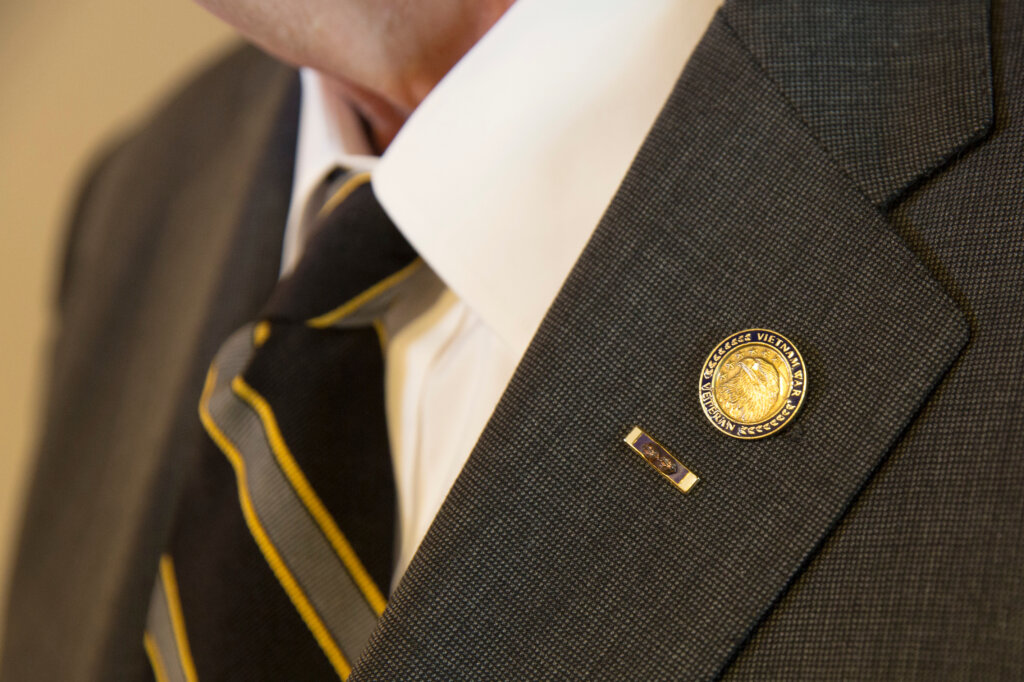
A lapel button is a small decorative button that goes on a garment’s lapel. Lapel buttons are often used for decoration, but they can also be used as buttons.
- Leather Button
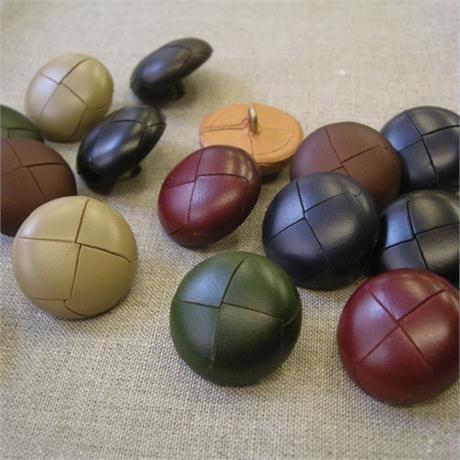
They make clothes look more put together. Both real and fake leather can be used to make these. These come in any shape, like round, square, oval, etc. Buttons made from real leather are stronger, last longer, and look better. You can find these buttons on sweaters, jackets, sports coats, and other clothes. They add a touch of luxury and style to an outfit and can also be useful, durable, and easy to care for.
- Jeans Button
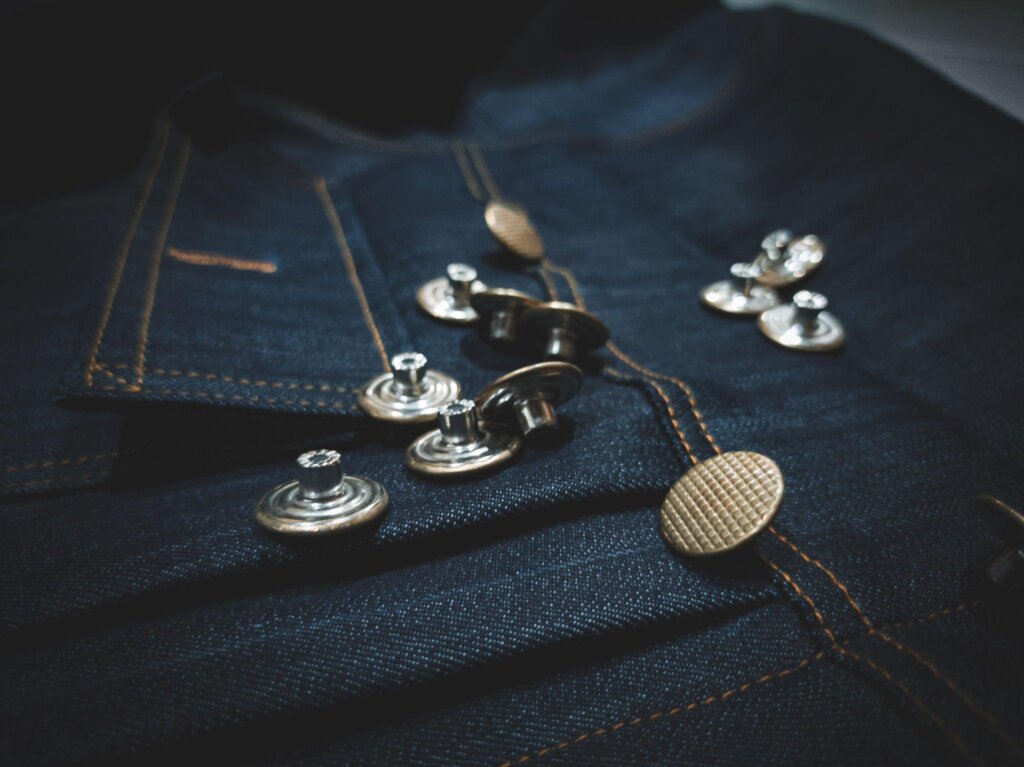
Types of pant buttons are a type of fastener that is often used on jeans and other clothes. It is made up of a metal or plastic button with a thread loop that holds it to the clothing. The button is then put into a hole on the other side of the garment that matches it. This holds the button in place.
- Button Horn

Horn buttons are a type of button made from an animal’s horn, usually from a cow. Most of the time, these button types are found on suits and tuxedos. Some traditional clothes, like the Scottish kilt, also have them.
- Press Button
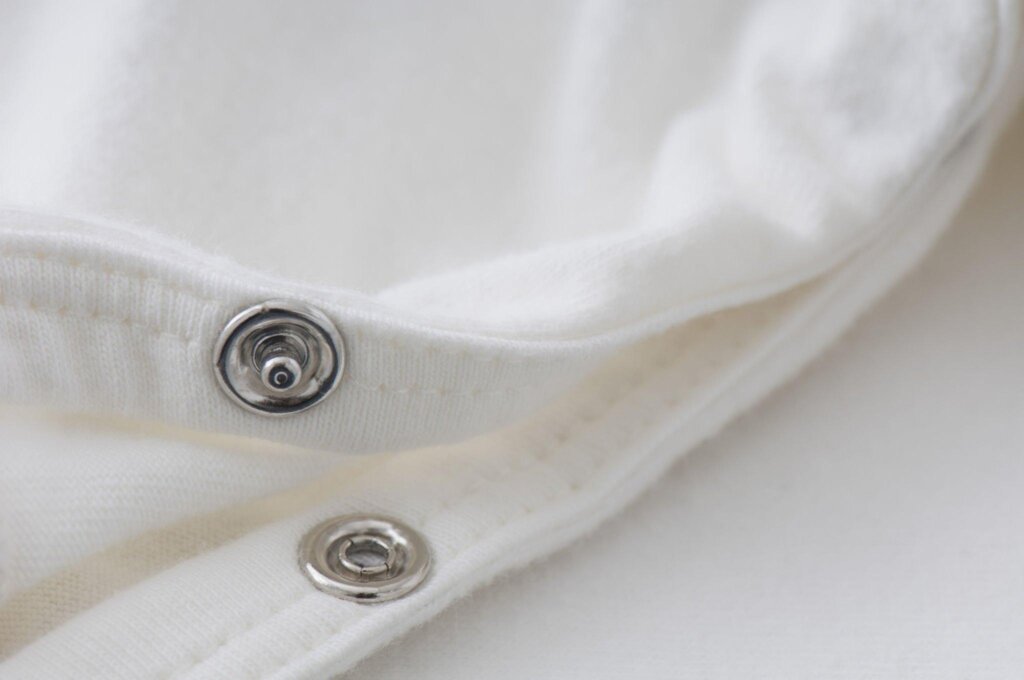
Press-button clothes have buttons on the front, usually near the waist. Most buttons are made of plastic or metal, and small loops of thread hold them to the fabric. Press-button clothes are easy to put on and take off, and they can be adjusted to fit a wide range of body shapes.
- Novelty Button
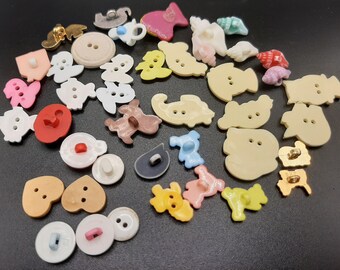
A novelty button is a decorative button that people often put on their clothes. They can be made of different materials than the rest of the garment, like metal or plastic, and can be sewn on or attached with a pin. Novelty buttons are often much bigger than regular buttons, and they may have pictures or words on them. As a hobby, some people like to collect unique buttons.
People often use novelty buttons to show their personality or make a statement. They can be funny, political, or just for looks. People like to wear novelty buttons to show off their own sense of style.
- Rhinestone Button
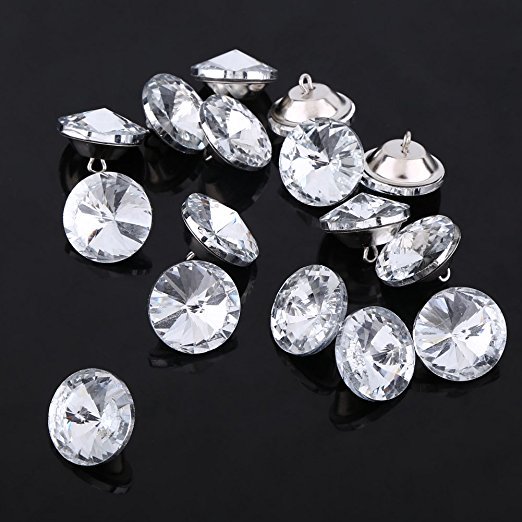
Most of the time, it is made of glass or crystal, and it looks shiny and sparkly. These buttons can add a touch of glamor and elegance to any outfit, and they are often used on formal and evening wear.
- Antler Button
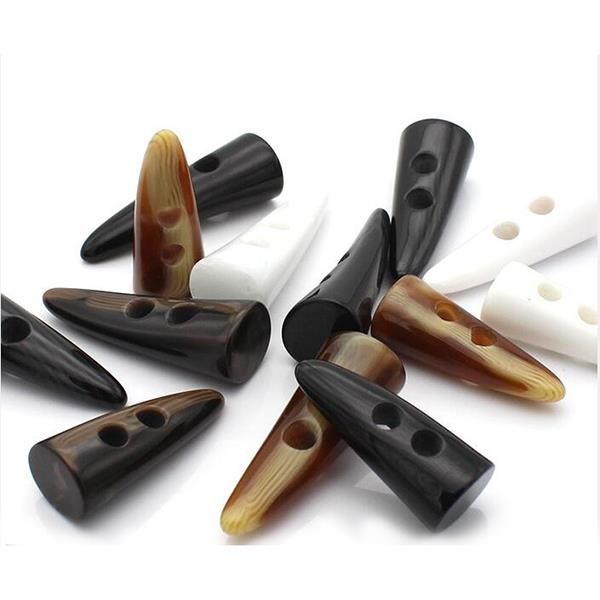
A button made from the antlers of a deer, elk, or moose is called an “antler button.” Most of the time, these buttons are used on clothes like shirts, coats, and jackets. The two-hole button is the most common type of antler button.
- Abalone Button

The shell of an abalone is used to make a button. Abalone buttons are often used for decoration because they look nice and shiny. They can be sewn onto clothes as a way to close them or as a way to decorate them. There are also times when abalone buttons are used in jewelry.
- Frog Button
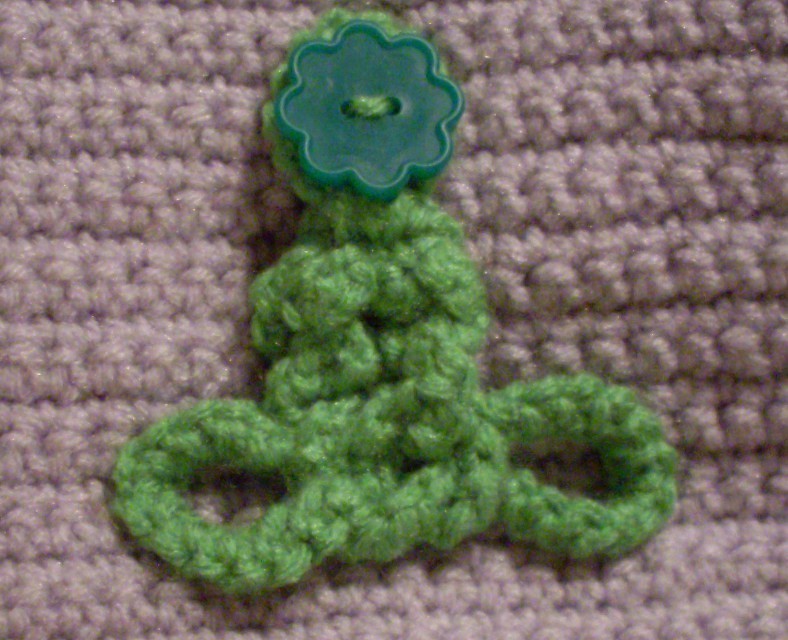
The Frog Button is a piece of fabric or leather that is sewn onto the clothing. It is a type of ornamental braiding closure made of cord and consists of a button (often a Chinese button knot for a traditional oriental look) and a loop. Then, a thread or string is used to attach the frog button to the clothing. Coats and jackets often have frog buttons. Some types of pants buttons have this on them all the time.
- Screw On Button
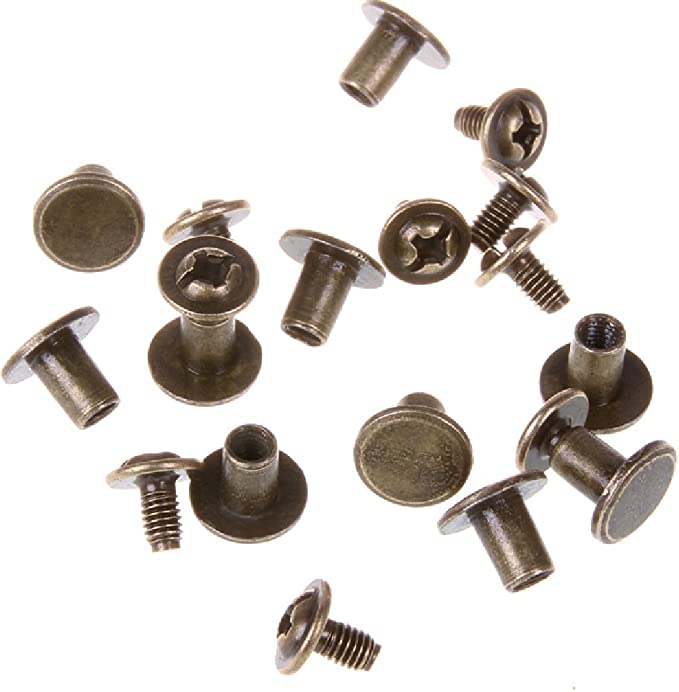
Screw-on buttons have two parts: the top, which has a hole in the middle, and the bottom, which looks like a screw. To attach the button to the fabric, the two parts are screwed together.
- Polyester Button
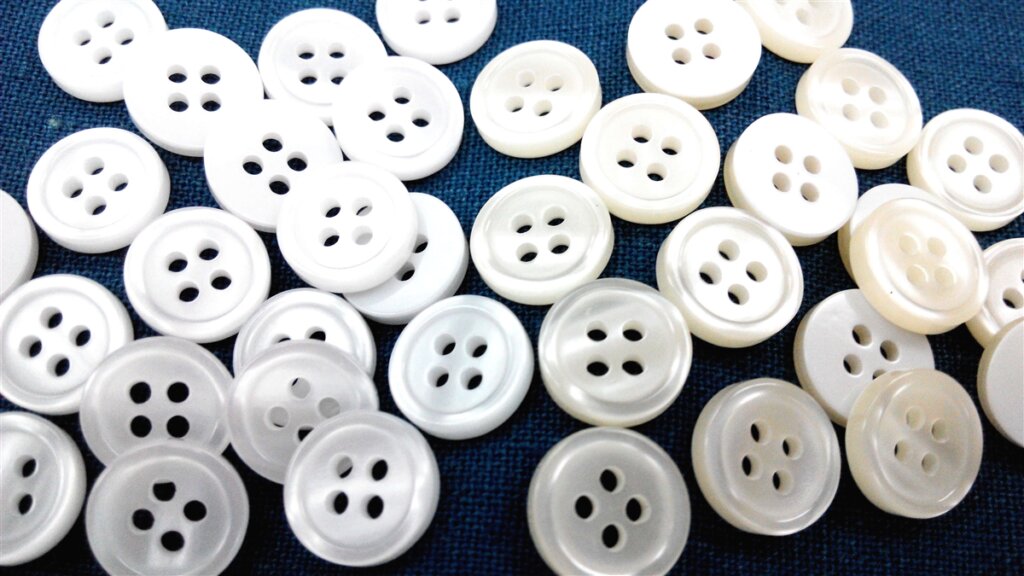
Polyester buttons are tough and will last a long time. But polyester buttons can be very shiny, which might not be the look you want. If you want the button to have a more matte look, you can paint it with matte nail polish. Don’t put on the garment until the polish is completely dry.
- Resin Button
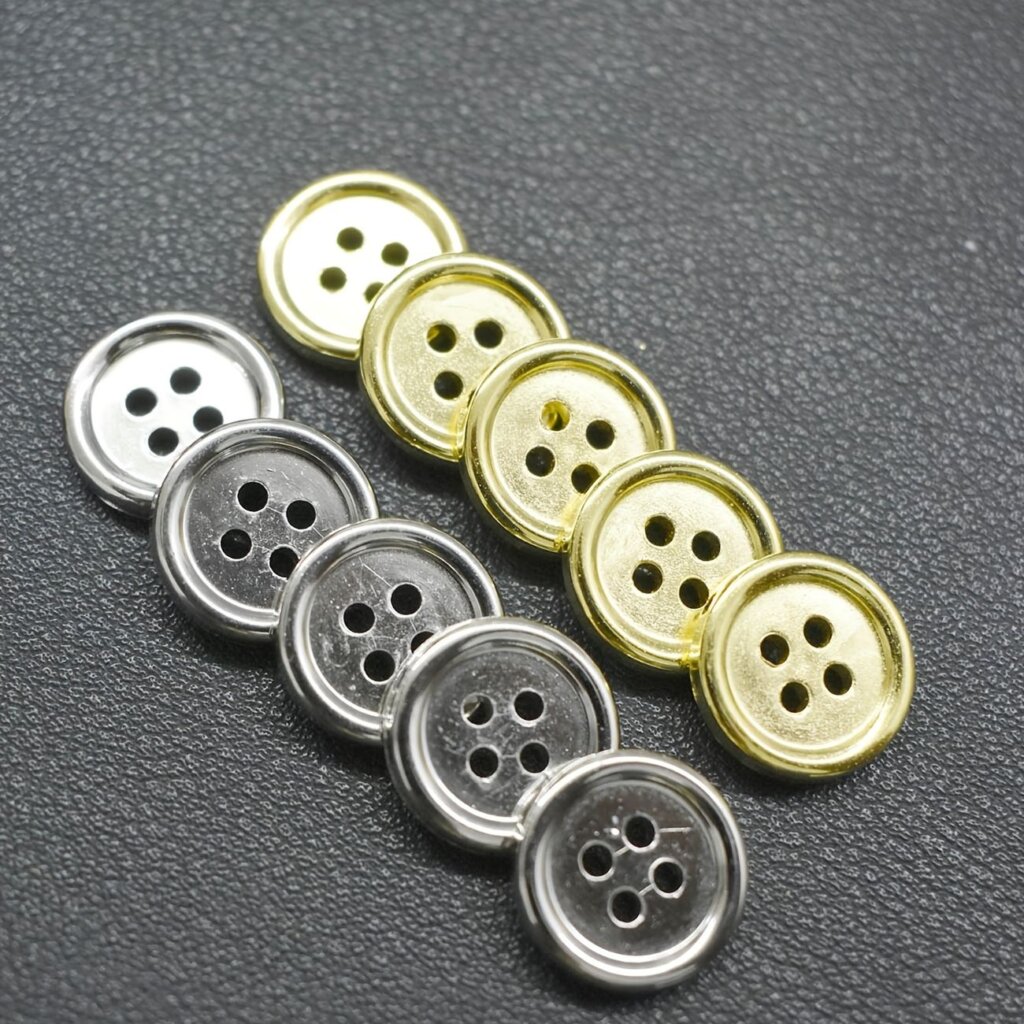
If you want to add a touch of style to your clothes in a unique way, try using resin buttons. Resin buttons are made of many different things, like plastic, metal, and even wood.
- Coconut Button
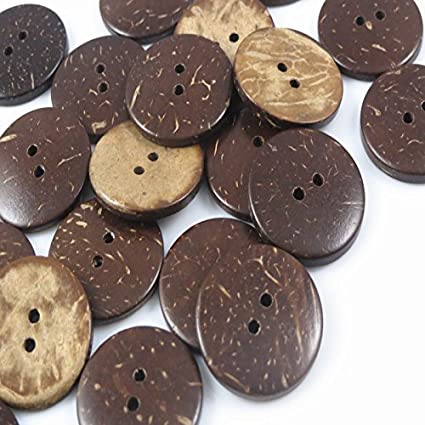
A coconut button is a key part of many kinds of clothing. It is a small, round button that is often made from the shell of a coconut. Shirts, dresses, blouses, and other clothes are fastened with coconut buttons. It can also be used to decorate clothes or be a part of a piece of jewelry.
- Rubber Button

They are often used on coats, raincoats, and other types of outerwear. They are also used on some shoes, like sneakers with rubber soles. Rubber buttons are less likely to come off than other kinds, so they are great for clothes that will be worn in bad weather.
- Enamel Button
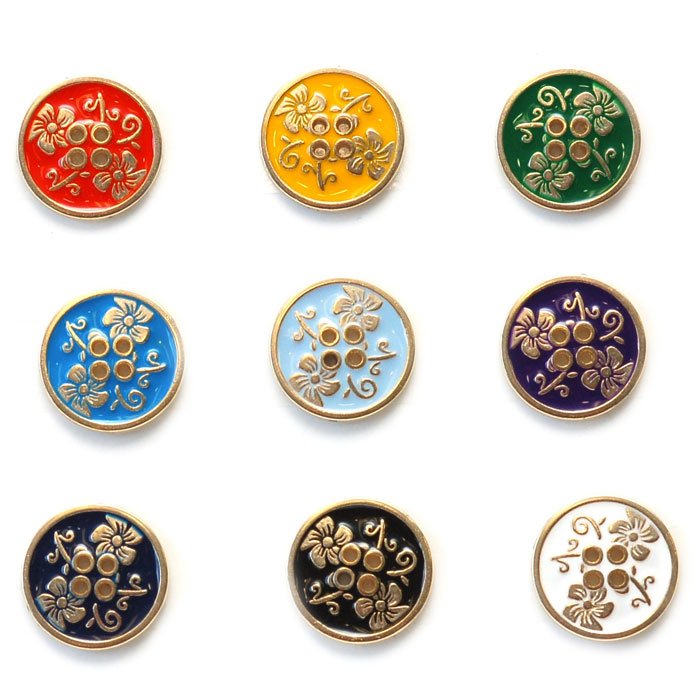
They are a type of button that is usually made from a metal base that is covered in enamel, which gives them a shiny look. The buttons come in many different colors, so they can be used to add a pop of color to any outfit.
- Rivets Button

One of the best different button types is the Rivets Button, which has two parts: the front and the back. Most of the time, the front is made of metal, plastic, or wood, and the back is made of cloth. The back of the button goes through a hole in the front of the button. The back of the button is then stitched onto the piece of clothing.
- Covered Button
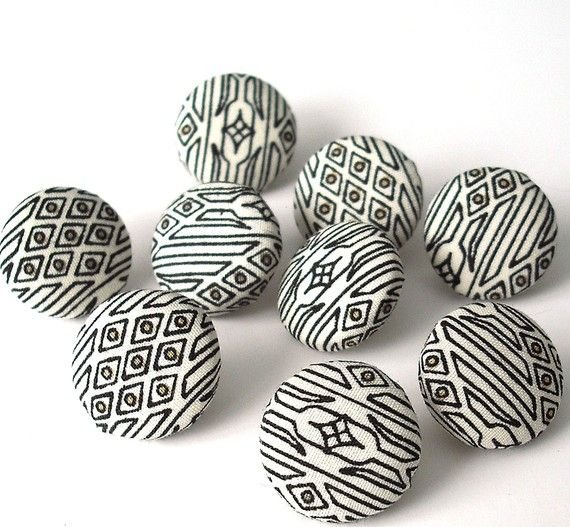
A covered button is a small piece of fabric, usually round, that is sewn over a button to make it look nicer and give it more support. The covering can be made out of many different things, like cloth, felt, leather, or even metal. Covered buttons aren’t just used on clothes; they are also often found in furniture.
- Nylon Button
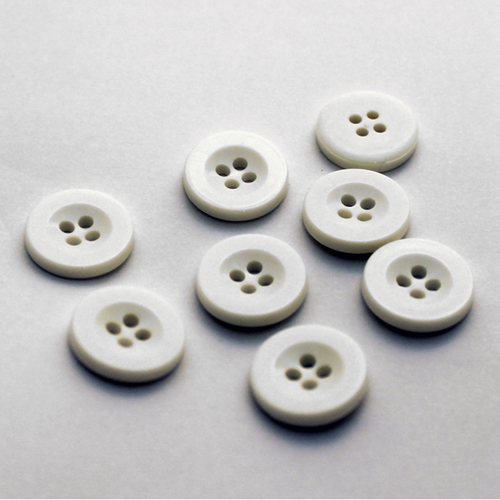
Most of the time, clothes have buttons made of nylon. Because these buttons are made of man-made plastic, they are often called “plastic buttons.” Because nylon buttons are strong and last a long time, they are great for jackets and coats that get a lot of wear. They can also stand up to water and heat, so they won’t get soft or warp when you wash them.
- Bead Button
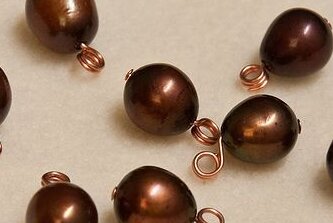
A bead button is a type of button that is made of a small, round bead that is sewn onto the fabric. Shirts, blouses, and dresses all have bead buttons that are used for decoration. Most of the time, bead buttons are found on jackets and cardigans. There are a lot of different colors, sizes, and shapes of bead buttons.
- Shank Button
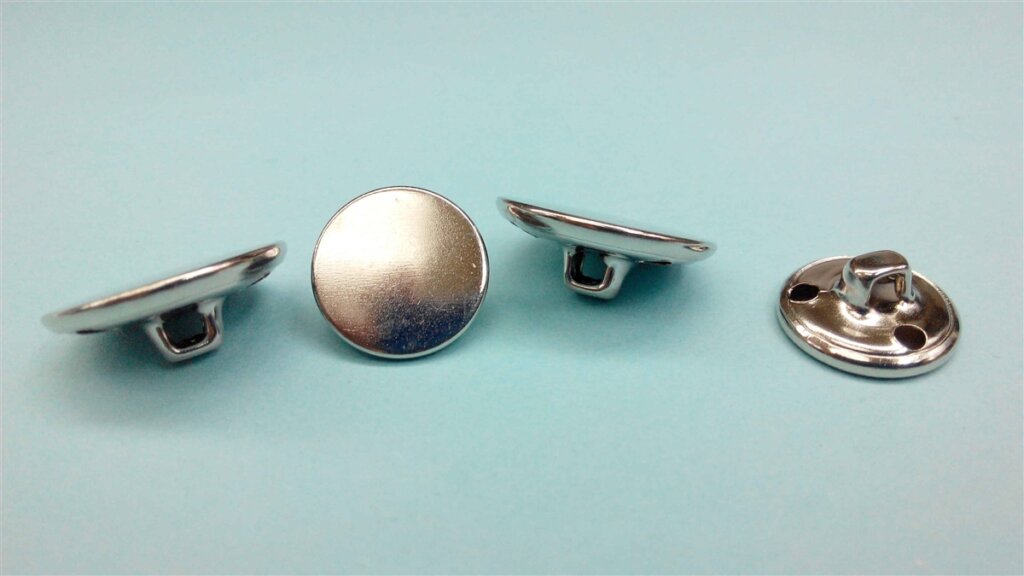
The shank button is a type of button that is sewn onto button types clothing and has a small metal loop, or “shank,” on the back. This kind of button is often used on denim or tweed, which are both heavy fabrics. Shank buttons come in many different sizes, shapes, and materials, so they can be used for almost any project.
Most of the time, shank buttons are found on jeans and other casual clothes. However, they can also be used to add a touch of class to more formal clothes.
- Wooden Button

A beautiful and unique way to add a touch of nature to your clothes is with wooden buttons. They can be made out of different kinds of wood, like maple, oak, cherry, and walnut. There are also many different sizes and shapes of wooden buttons. You can pick round, oval, square, or rectangular buttons. You can also choose carved or painted buttons. Wooden buttons are a great way to give your clothes a unique look.
- Toggle Button

A toggle button is a way to attach two pieces of fabric or other materials together. When a small, simple closure is needed, toggle buttons are often used on coats, sweaters, and other clothes. They can also be used to make bags, purses, and other accessories look nicer.
Most toggle buttons are made up of a small disc or bar called a toggle that is attached to one end of a cord or loop of material. The other end of the cord is put through a loop or hole in the second piece of fabric, and then the toggle is pulled back through the loop. This makes sure that the two pieces of fabric stay together.
- Snap Button
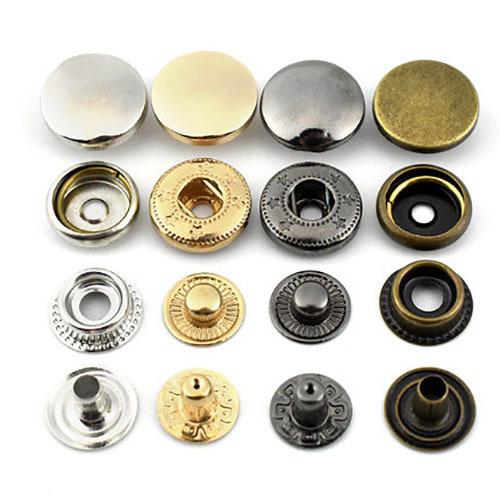
The snap button is a type of closure that is used on clothes and other things. It is also called a press stud, popper, or snap fastener. Most snap buttons are made of plastic or metal and have two parts: a prong and a hole.
A spring connects the two halves, and when the prong is inserted into the hole, it springs back into position to keep the two halves together. Snap buttons are used on shirts, jackets, pants, skirts, and dresses, among other things. They are also often found in diapers and clothes for babies.
- Cufflinks
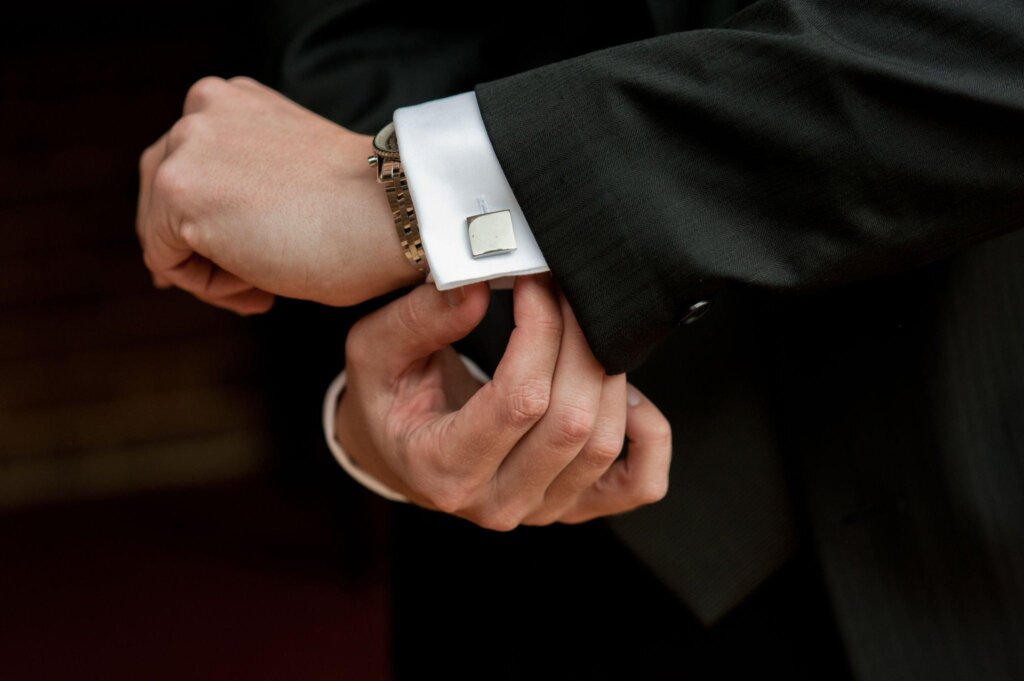
They can be used instead of buttons, which are usually sewn into the cuff, to close the sleeves of a shirt.


